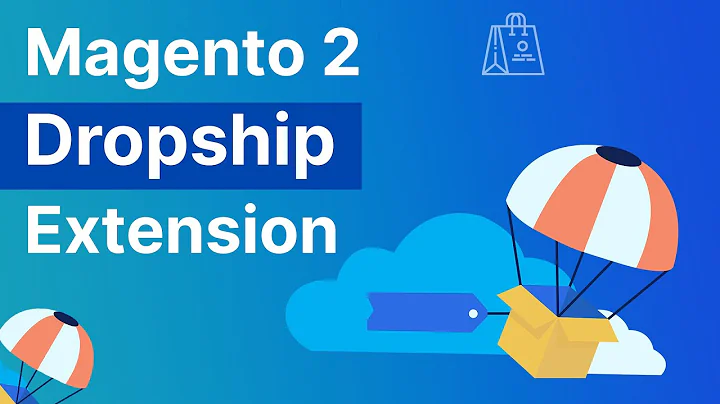How to Make $1.38 Million? Learn from My $167K Success Story!
Table of Contents:
- Introduction
- The Power of Digital Products
- Identifying a Problem
- Finding Solutions
4.1 Competitor Analysis
4.2 Using PLR Websites
4.3 Examples of Successful Digital Products
- Creating a Website
5.1 Choosing Hosting and Domain
5.2 Setting up a WooCommerce Store
5.3 Designing a Landing Page
- Promoting Your Digital Products
6.1 Utilizing Social Media
6.2 Running Facebook Ads
6.3 Building Customer Database
- Patience and Persistence
The Power of Digital Products
In the digital age, the opportunities for earning money online are endless. One lucrative avenue that requires minimal investment and holds immense potential is selling digital products. Whether you possess specific skills or not, you can easily create and sell digital products that cater to people's needs. In this article, we will explore the step-by-step process of creating and selling digital products, along with success stories and useful tips.
1. Introduction
In this era of technological advancements, the internet has become a breeding ground for various online business models. One such model gaining popularity is selling digital products. Unlike physical products, digital products are intangible and can be easily distributed through the internet. This offers a wealth of opportunities for individuals to create and sell their own digital products, enabling them to earn income and reach a global audience.
2. The Power of Digital Products
Digital products offer numerous advantages over physical products. They can be created once and sold repeatedly without the need for restocking or shipping costs. With the right marketing strategies, digital products can result in a scalable and passive income stream. Additionally, they provide the convenience of instant delivery to customers, making them an attractive option for both sellers and buyers.
3. Identifying a Problem
The key to a successful digital product lies in identifying a problem that a significant number of people are facing. By conducting market research and studying popular platforms such as Quora and Reddit, you can uncover niches and areas where people are seeking solutions. Look for recurring questions or challenges that people are struggling with and consider how you can provide a solution through a digital product.
4. Finding Solutions
Once you have identified a problem, the next step is to find solutions that can be transformed into digital products. This can be done through competitor analysis, where you study the products and offerings of your competitors in a particular niche. Additionally, you can utilize Private Label Rights (PLR) websites to access pre-made digital products that can be rebranded and sold as your own.
4.1 Competitor Analysis
By analyzing your competitors' products, you can gain insights into the format, structure, and pricing of successful digital products in your niche. This allows you to evaluate the demand for specific formats such as e-books, cheat sheets, video courses, or templates. Understanding what has already worked for others can guide you in creating a unique and marketable digital product.
4.2 Using PLR Websites
PLR websites offer a wide range of pre-made digital products that can be obtained either for free or at a minimal cost. These products can be rebranded, customized, and sold as your own, saving you time and effort in creating content from scratch. PLR websites provide a variety of formats, including e-books, videos, cheat sheets, and templates, making it easier to find solutions to different problems.
4.3 Examples of Successful Digital Products
Numerous success stories demonstrate the potential of digital products. Websites like Instamojo, Bundlehero.com, and Avoline.co have created profitable businesses by selling digital products in various formats. Instamojo provides a platform for creators to sell their own products, while Bundlehero.com offers bundles of templates for different purposes. Avoline.co specializes in providing affordable digital marketing resources. These examples highlight the versatility and profitability of digital products.
5. Creating a Website
Having a website is vital for establishing your brand and showcasing your digital products. You can create a website using platforms like WordPress and set up an online store using the WooCommerce plugin. This allows you to easily manage and display your products, handle transactions, and provide a seamless buying experience for your customers.
5.1 Choosing Hosting and Domain
To create a website, you need a hosting service and a domain name. Hostinger is an affordable and reliable hosting provider that offers various plans to suit your needs. Consider purchasing a domain name relevant to your niche that resonates with your target audience.
5.2 Setting up a WooCommerce Store
WooCommerce is a popular plugin for WordPress that enables you to turn your website into an e-commerce store. By installing and configuring WooCommerce, you can add products, set pricing, manage inventory, and handle customer transactions securely.
5.3 Designing a Landing Page
A well-designed landing page is essential for converting visitors into customers. Using tools like Elementor, you can create visually appealing landing pages that effectively communicate the value of your digital products. Focus on highlighting the problem your product solves, the unique features it offers, and any testimonials or social proof to build trust with potential customers.
6. Promoting Your Digital Products
Once your website and digital products are set up, it's time to promote them and attract customers. Utilize social media platforms such as Instagram, Facebook, and YouTube to engage with your target audience. Networking with influencers in your niche can help expand your reach and gain credibility. Running Facebook ads can drive targeted traffic to your website, increasing the chances of sales. Don't forget to build a customer database by collecting email addresses, allowing you to re-engage with potential customers and upsell additional products.
6.1 Utilizing Social Media
Social media platforms provide an excellent opportunity to showcase your digital products. Create engaging content related to your niche, share valuable insights, and interact with your audience. Join relevant groups and communities, participate in discussions, and leverage the power of social media to build a loyal following.
6.2 Running Facebook Ads
Facebook ads can be a powerful tool for promoting your digital products to a highly targeted audience. Develop compelling ad copy and visuals that highlight the benefits and solutions your products offer. Test different ad formats, audiences, and messaging to find the most effective combination that generates sales.
6.3 Building Customer Database
Collecting email addresses and building a customer database allows you to keep in touch with potential customers. Send regular newsletters, updates, and personalized offers to nurture relationships and encourage repeat purchases. Offering exclusive discounts or bonuses to your email subscribers can incentivize them to become loyal customers.
7. Patience and Persistence
Building a successful online business selling digital products requires patience and persistence. Results may not come overnight, but with continuous efforts, strategic marketing, and a commitment to providing value, you can achieve significant success. Stay focused on your goals, adapt to market trends, and always strive to improve the quality and relevance of your digital products.
Highlights:
- Selling digital products offers scalability and passive income potential
- Identify problems and find solutions to create in-demand digital products
- Use competitor analysis and PLR websites to gain product ideas and inspiration
- Create a website with WooCommerce to sell and showcase your digital products
- Promote your products through social media, influencer collaborations, and Facebook ads
- Build a customer database to nurture relationships and encourage repeat purchases
- Success requires persistence, continuous improvement, and a commitment to providing value to your customers
FAQ
Q: Do I need to have technical skills or coding knowledge to create and sell digital products?
A: No, you don't need extensive technical skills or coding knowledge. Platforms like WordPress and WooCommerce provide user-friendly interfaces that make it easy to set up an online store and manage your digital products.
Q: How do I determine the pricing for my digital products?
A: The pricing of your digital products will depend on various factors such as the value you provide, market demand, and the perceived benefits of your product. Conduct market research and consider the pricing strategies used by your competitors to determine a competitive and profitable price point.
Q: Can I sell digital products without having my own website?
A: While having a website is recommended for establishing your brand and showcasing your products, it is possible to sell digital products through third-party platforms such as marketplaces and social media platforms. However, having your own website provides more control and flexibility in terms of branding and customer experience.
Q: Is it necessary to invest in paid advertising to sell digital products?
A: While paid advertising can significantly boost your product visibility and sales, it is not mandatory. You can leverage organic methods such as content marketing, social media engagement, and search engine optimization to attract traffic and promote your digital products.
Q: How can I ensure the security and delivery of my digital products?
A: There are various plugins and services available, such as Easy Digital Downloads, that handle secure product delivery and protect against unauthorized access. These tools enable you to securely deliver digital products to customers upon purchase while ensuring the protection of your intellectual property.
Q: Can I offer refunds or returns for digital products?
A: Refund and return policies are subjective and depend on your business model and products. It is essential to clearly communicate your refund and return policies to customers before purchase to manage their expectations. Consider offering refunds or replacements in case of technical issues or dissatisfaction to maintain customer satisfaction and loyalty.



















